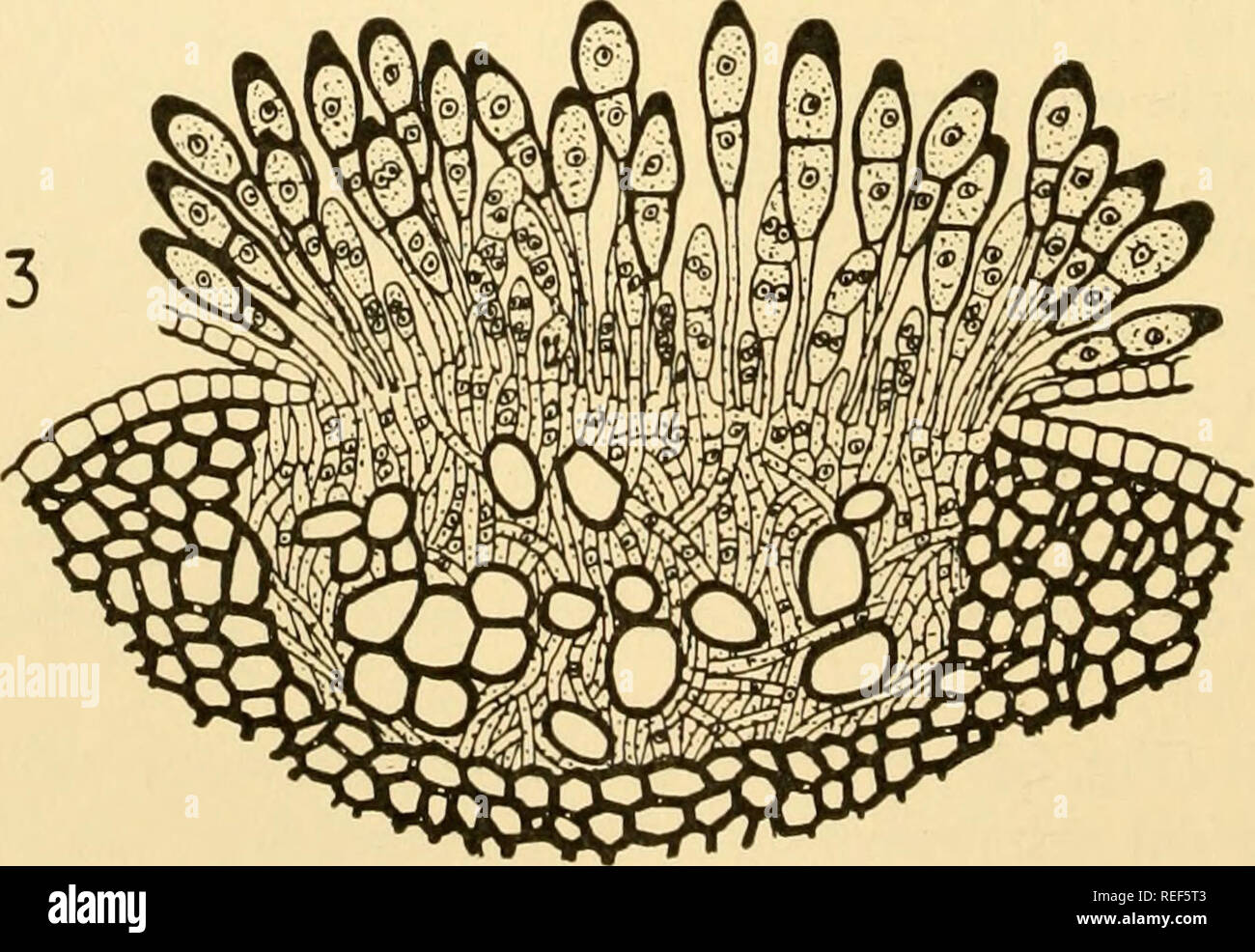. Comparative morphology of Fungi. Fungi. Fig. 387.—1. Botryorhiza Hippocrateae, section of mature and young telium. 2. Uromyces striatus; 3. Puccinia graminis. (1 X 330; 2, 3 X 300; 1 after Olive, 1918; 2, 3, after Sappin-Trouffy, 1896.) and whose spores, thick walled and yellow brown, falling easily from the stipe, can germinate only after a winter's rest (forma fragilipes). In Gymnosporangium the number of daughter cells is generally two; in Phragmidium (Fig. 388, 1 to 4), it may reach twelve. In both genera,. Please note that these images are extracted from scanned page images that may hav

Image details
Contributor:
The Book Worm / Alamy Stock PhotoImage ID:
REF5T3File size:
7.1 MB (431 KB Compressed download)Releases:
Model - no | Property - noDo I need a release?Dimensions:
1903 x 1313 px | 32.2 x 22.2 cm | 12.7 x 8.8 inches | 150dpiMore information:
This image is a public domain image, which means either that copyright has expired in the image or the copyright holder has waived their copyright. Alamy charges you a fee for access to the high resolution copy of the image.
This image could have imperfections as it’s either historical or reportage.
. Comparative morphology of Fungi. Fungi. Fig. 387.—1. Botryorhiza Hippocrateae, section of mature and young telium. 2. Uromyces striatus; 3. Puccinia graminis. (1 X 330; 2, 3 X 300; 1 after Olive, 1918; 2, 3, after Sappin-Trouffy, 1896.) and whose spores, thick walled and yellow brown, falling easily from the stipe, can germinate only after a winter's rest (forma fragilipes). In Gymnosporangium the number of daughter cells is generally two; in Phragmidium (Fig. 388, 1 to 4), it may reach twelve. In both genera, . Please note that these images are extracted from scanned page images that may have been digitally enhanced for readability - coloration and appearance of these illustrations may not perfectly resemble the original work.. Gäumann, Ernst Albert, 1893-1963; Dodge, Carroll William, 1895-. New York [etc. ] McGraw-Hill Book Company, Inc.